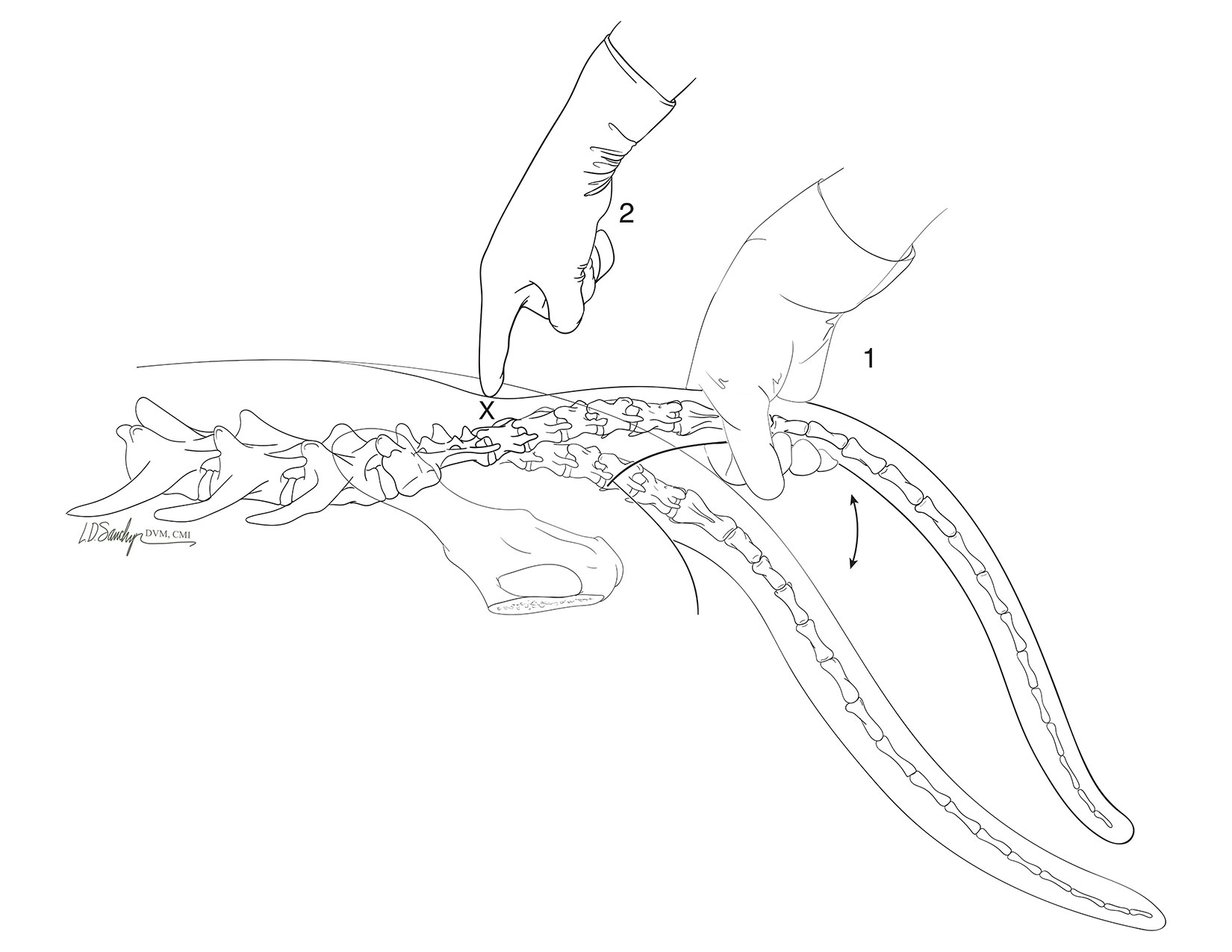Local Anesthetic Techniques For Perineal Procedures


Canine or feline sacrococcygeal or coccygeal epidural
INDICATIONS: Canine and feline tail amputations, perineal urethrostomies, anal sacculectomies, catheterization for relief of urethral obstruction, perineal relaxation for delivery of puppies/kittens, and other surgeries of the penis or perineal region.
INSTRUCTIONS:
- For either dogs or cats, use 0.1 mL/kg of either lidocaine, bupivacaine, mepivacaine, or ropivacaine.
- A dose of 0.1 mL/kg is usually sufficient but up to 0.2 mL/kg is reported. The average volume in a cat or small dog is 0.5 mL.
- Dosing volumes are based on the following drug concentrations:
lidocaine 2%, mepivacaine 2%, bupivacaine 0.5%, and ropivacaine 0.5%.
If the drug concentrations used are higher, using a lower volume of the drug and diluting it with saline is recommended to ensure a safe dose at an adequate volume.
- To find the sacrococcygeal site, move the tail up and down in a “pumping” motion while palpating the sacrococcygeal region of the patient (1).
- The first movable space at the caudal end of the sacrum is either the sacrococcygeal or intercoccygeal space (2). Either site is appropriate for injection and there is no need to differentiate what site is being palpated.
- Insert a 25- or 22-gauge hypodermic needle through the skin ON MIDLINE at ~45° angle to the skin surface. Proceed slowly until the needle enters the space (3).
-
- If bone is encountered (it usually is), withdraw the needle a few millimeters, redirect slightly (steeper or flatter angle), and reinsert (“walking” off the bone).
- b. Repeat this process until the needle is inserted between the vertebrae to enter the intervertebral space. A “pop” may be felt and there should be no resistance to injection.†
CONSIDERATIONS: (1) Pelvic limbmotor function is not blocked unless the volume of local anesthetic is large, causing cranial spread to the motor nerves of the pelvic limbs. Stay at or below the 0.2 mL/kg volume. (2) If tail/anus relaxation does not occur within 5 min (within 8–10 min with bupivacaine or ropivacaine), the injection may have been made subcutaneously. Try again!
*Opioids could be added as adjunct for perineural blocks, but they will not reach the receptors in the spinal cord and thus will not provide the long duration achieved with lumbosacral injection.
†There is generally no need for the saline test dose as is used for lumbosacral epidurals—just inject the drugs. Do not inject air; an air bubble may cause incomplete block because this is a very small space.
Artwork by Lauren D. Sawchyn, DVM, CMI.
IMPORTANT: The authors, reviewers, and editors of the material in the 2020 AAHA Anesthesia and Monitoring Guidelines for Dogs and Cats have made extensive efforts to ensure that treatments, drugs, and dosage regimens are accurate and conform to the standards accepted at the time of publication. However, constant changes in information resulting from continuing research and clinical experience, reasonable differences in opinions among experts, unique aspects of individual clinical situations, and the possibility of human error in preparing such an extensive text require that the veterinarian exercise individual judgment when making a clinical decision and, if necessary, consult and compare information from other sources. In particular, the veterinarian is advised to check the drug’s product insert before prescribing or administering it, especially if the drug is unfamiliar or is used infrequently.





